Why This is Important
To protect yourself, you need to know your vulnerabilities. The pandemic flu virus can infect you by two means:
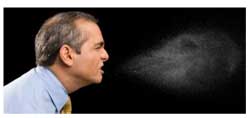
- Breathing in droplets containing infectious material. A RESPIRATOR IS A FACE COVERING THAT PROTECTS THE WEARER FROM INHALING GERMS. Keep reading to learn how to protect yourself.
- Contact between infectious material and the lining of the eyes, nose or mouth.(See: "Staying Healthy: Good Practices")
Respirator Types
NOTE: Respirators provide protection only when worn properly. Follow instructions exactly.
A respirator should cover the nose with no gaps between the respirator and the side of the wearer's face. NOTE: Only purchase a ‘NIOSH’ certified respirator
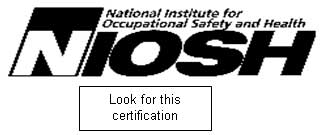
Surgical masks only prevent the wearer from spreading germs. Respirators (which often look like surgical masks) protect the wearer from inhaling germs.
The OSHA Guidance on Preparing Workplaces for an Influenza Pandemic Respirators classifies particulate respirators and particulate filters as follows:
An N95 respirator is one of nine types of particulate respirators. Respirator filters that remove at least 95 percent of airborne particles during "worst case" testing using the "most-penetrating" size of particle are given a 95 rating. Those that filter out at least 99 percent of the particles under the same conditions receive a 99 rating, and those that filter at least 99.97 percent (essentially 100 percent) receive a 100 rating. In addition, filters in this family are given a designation of N, R, or P to convey their ability to function in the presence of oils that are found in some work environments.
- "N" if they are Not resistant to oil.
(e.g., N95, N99, N100)
- "R" if they are somewhat Resistant to oil.
(e.g., R95, R99, R100)
- "P" if they are strongly resistant
(i.e., oil Proof). (e.g., P95, P99, P100)
This rating is important in work settings where oils may be present because some industrial oils can degrade the filter performance to the point that it does not filter adequately. Thus, the three filter efficiencies combined with the three oil designations lead to nine types of particulate respirator filter materials. It should be noted that any of the various types of filters listed here would be acceptable for protection against pandemic influenza in workplaces that do not contain oils, particularly if the N95 filter type was unavailable due to shortages.
|
Example Respirators
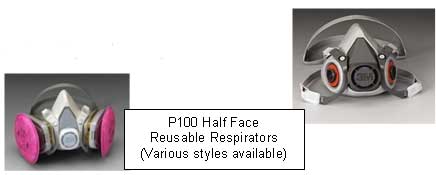 The following example respirators are ranked in order of NIOSH effective rating (most effective first):
The following example respirators are ranked in order of NIOSH effective rating (most effective first):
P100 half face respirator, reusable - Comfortable for extended wearing (several hours)
- Uses replaceable filters
- Relatively easy to obtain a good fit, and verify the fit
- More expensive than disposable respirator
N100 disposable respirator 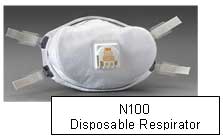
- Relatively expensive for one-time use
- Requires careful fitting to prevent leakage
N95 disposable vented respirator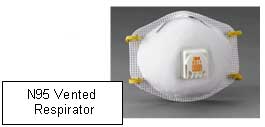
- Requires careful fitting to prevent leakage
- Uncomfortable for extended wearing
- Relatively inexpensive
N95 disposable respirator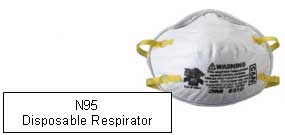
- Requires careful fitting to prevent leakage
- Uncomfortable for extended wearing
- Becomes moist quickly, losing effectiveness
- Relatively inexpensive
Which Respirator Should I Use?
There is a lack of consensus and conflicting recommendations for respirators within the scientific and public health communities. Therefore, we cannot recommend any model. Instead, we offer our personal preference.


Our top choice for personal use is the N-100 or P-100 half face piece respirator, reusable. This mask filters particles smaller than the flu virus. (P-100 shown)
- BACK-UPS:
We would use the following respirators for backup (in order of preference):
- N100 disposable respirator
- N95 disposable vented respirator
- N95 disposable respirator
Disposable respirators are designed for one-time use. Reusable respirators have replaceable filters.